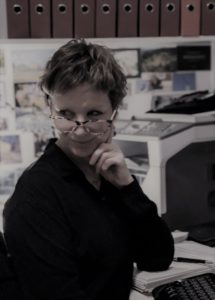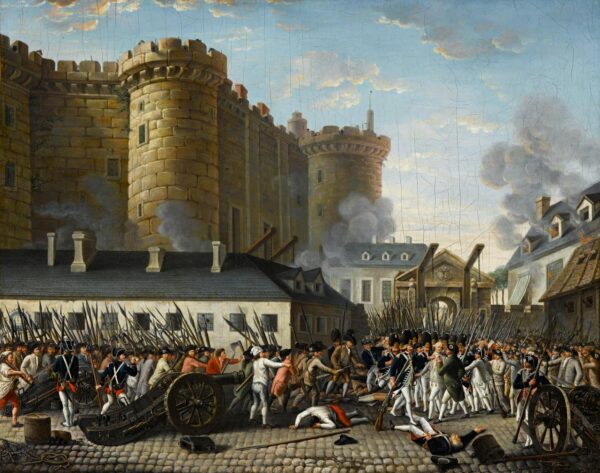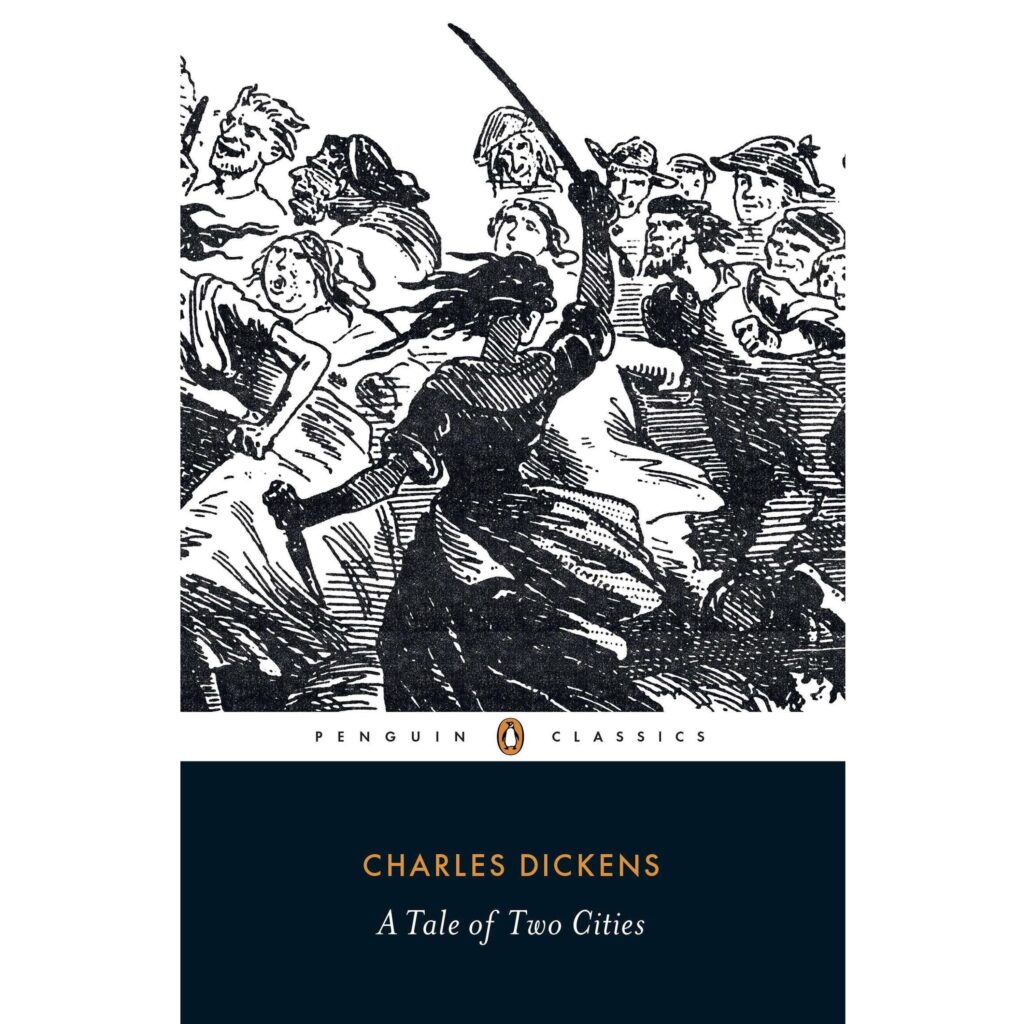Fictional characters don’t have to be human—they can be forces of nature, such as a hurricane that bears down on a town, or an insidious pandemic. Or a character can be the collective personality of a surging, angry mob, moving and acting as one, protesting or murdering in the streets. Not only acting as a force that antagonises and threatens authority and individual human characters, the accompanying noise, colour and movement enlivens the scene. More and more writers of fiction are ‘thinking outside the circle’ when it comes to creating prominent characters, and some may not be human!
Kate Grenville wrote in The Writing Book (2010): “Characters are not [real] people, but they are like people in being, finally, mysterious.” And so, to take Grenville’s contention further, a place or landscape can exhibit human characteristics, mysterious or otherwise, adding an unsettling third dimension to the character arc. For example, in Jack London’s White Fang (1906):
Dark spruce forest frowned on either side the frozen waterway. The trees had been stripped by a recent wind of their white covering of frost, and they seemed to lean towards each other, black and ominous, in the fading light.
I recently came across the poignant 1958 black and white film adaptation of Charles Dickens’ A Tale of Two Cities (1859) with Dirk Bogarde playing Sydney Carton.
Who can forget Sydney Carton’s famous last words as he faces the guillotine with the shrill of the revolutionary mob ringing in his ears? “It is a far, far better thing that I do, than I have ever done . . .” His words are drowned out by the starving crowd baying for blood—a character of mammoth proportions, magnifying the madness.
This novel is about revolution, forced by the pressures exerted by the oppressed crowd that crammed the streets of Paris prior to and following the storming of the Bastille in 1789.
The Defarge wine shop, central to the dramatic action, is situated in the “life-in-death rookery of Saint Antoine”, the “slum-maze” ripe for revolution. A cask of red wine drops and shatters in the street, staining the ground before a “jostling” crowd. There is “a shrill sound of laughter . . . resounding in the street.” The words, “jostling” and “shrill” convey anxiety and tension within the general population of Parisians, who were at breaking point. The spilling of red wine foreshadows the shedding of blood, and the broken wine cask represents the bursting of a festering wound as the suffering people mass together as one, ripe for revolution.
Dickens uses the sea as a dominant metaphor for describing the revolutionary crowd as it storms towards the Bastille: “a whirlpool of boiling waters … the remorseless sea of turbulently swaying shapes … the ocean of faces where every fierce and furious expression was in vivid life.” This passage conveys the issuing of a force by the “boiling” revolutionary crowd. Dickens delivers an apocalyptic image of the “furious” crowd as a “turbulently” swirling force of nature.
The echoing of the mob’s footsteps reverberates across The Channel, threatening the peaceful lives of the Manette and Darnay households in London.
“Headlong, mad and dangerous footsteps to force their way into anybody’s life, footsteps not easily made clean again if once stained red, the footsteps raging in Saint Antoine afar off, as the little circle sat in the dark London window.”
When the quiet corner of London’s Soho is overpowered by a storm, it foreshadows a violent force soon to engulf the idyllic lives of the family as they hear people running for cover. Dr Manette speaks of the storm as the threatening mob, “It comes slowly”. And Carton adds prophetically, “It comes surely”. In the London streets, “the echoes of footsteps coming and going” as the rain fell, echo the “dangerous” footsteps of the “mad” crowd soon to storm the Bastille.
Carton announces that there will be “a great crowd coming one day into our lives”, which eerily foreshadows their unwitting, and tragic, clash with the revolutionary antagonist in Paris as it grows in tempo, volume and violence, destined to overturn the status quo in France. The “great crowd” prophecy of Carton’s becomes a reality. Although Dickens understood that revolution was inevitable, he feared the violent crowd, which he often represented as non-human. The crowd storming the Bastille is described as a “vast dusky mass of scarecrows”, suggesting a fear of the psyche of people who have been oppressed and starving for “so long”.
The volatile nature of the crowd is noticeable after Charles Darnay’s first reprieve. At first, the jubilant “great crowd” carries Darnay in a chair, which is described as a “car of triumph”, but the tide turns and runs “mad, like the people on the shore”. Dickens’ fear of the unpredictable nature of the “mad” crowd culminates in his description of “a confused sea of red caps heaving about him [Darnay], and casting up to sight from the stormy deep such wrecks of faces…”
When the second hearing reveals Darnay’s guilty family secret, the crowd yells for his head, which gives substance to the “the echoes of all the footsteps” that finally receive their embodiment in the judging, avenging “great crowd”.
“A terrible sound arose when the reading of this document was done. A sound of craving . . . revengeful passions . . . there was not a head in the nation but must have dropped before it.”
The Parisian crowd is represented as a collective living monster, chillingly audible across the nation and inciting a “patriotic fervour”.
On the other hand, the crowd represents hope for the future when, after Carton’s sacrificial death, there are “many footsteps in the outskirts of the crowd, so that it swells forward on mass, like one great heave of water, all flashes away”. This is a final positive image of the footsteps of the “great crowd” representing a natural force of energy bursting forth on mass to wash away the blood spilled in the streets and, ultimately, the oppressive inequalities of the past. But alas, we know the result of this bloody revolution and the relentless hunger for power that followed such a massive uprising of the oppressed people.
And so, when working on ideas for a novel, it’s always worthwhile thinking outside the traditional character arc and consider creating other types of characters (apart from fantasy characters) that may exhibit human qualities, but establish an unsettling effect and unrelenting force on the protagonist. As a long-time editor, I am often dazzled by these character creations.
Manuscript Assessment
 If you are ready to have your writing edited, or you would like an assessment of your writing project, whether it is a complete manuscript or a work-in-progress, then please email me via my contact page with a brief overview, or directly: denise@denisemtaylor.com.au.
If you are ready to have your writing edited, or you would like an assessment of your writing project, whether it is a complete manuscript or a work-in-progress, then please email me via my contact page with a brief overview, or directly: denise@denisemtaylor.com.au.
My editing is based on the Australian Style Manual (ASM) unless an author has been commissioned to write a book using the publishing house style guide.
Featured image: FRANCE, The storming of the Bastille prison and the arrest of its governor, Bernard-René de Launay, 14 July 1789 1789, oil on canvas, 57.0 x 73.0 cm, Versailles, musée national du château





